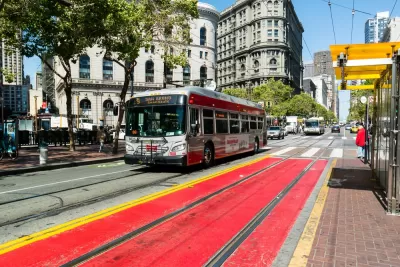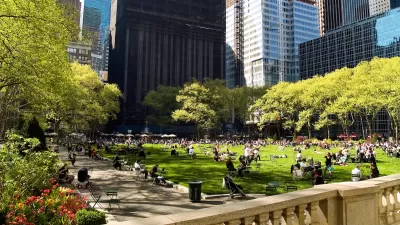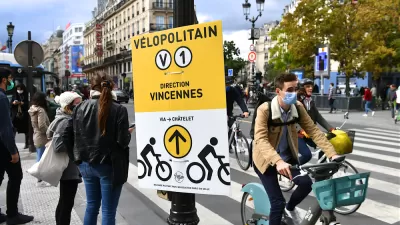The San Bruno Avenue Multimodal Improvement Project moved forward in San Francisco despite local resistance. The planning and political calculus behind the project is a sign of more to come in the City by the Bay.

Rachel Swan reports on the details of the San Bruno Avenue Multimodal Improvement Project, which recently reduced parking to speed up buses in San Francisco as a component of much larger changes to the street in the "scruffy" neighborhood of Portola.
According to Swan, the San Bruno project, with "wide sidewalks, short crosswalks, big “bulb-out” curbs and bus zones long enough to fit two coaches" is a vision of the city's future, as also apparent on Market Street—which will soon ban cars entirely from the street.
"Cars no longer reign supreme in San Francisco. Instead, the mayor and transportation agency are making swift transit and pedestrian safety the priority," writes Swan.
The project met stout resistant from local business owners, but the political will to push the project through is also a symbol of a new era in the city, according to the article.
FULL STORY: To speed up buses, SF cut parking on San Bruno Avenue. Welcome to the city’s future

Americans May Be Stuck — But Why?
Americans are moving a lot less than they once did, and that is a problem. While Yoni Applebaum, in his highly-publicized article Stuck, gets the reasons badly wrong, it's still important to ask: why are we moving so much less than before?

Using Old Oil and Gas Wells for Green Energy Storage
Penn State researchers have found that repurposing abandoned oil and gas wells for geothermal-assisted compressed-air energy storage can boost efficiency, reduce environmental risks, and support clean energy and job transitions.

Placekeeping: Setting a New Precedent for City Planners
How a preservation-based approach to redevelopment and urban design can prevent displacement and honor legacy communities.

Study: Maui’s Plan to Convert Vacation Rentals to Long-Term Housing Could Cause Nearly $1 Billion Economic Loss
The plan would reduce visitor accommodation by 25,% resulting in 1,900 jobs lost.

Idaho Data: Unexpected Vehicle Repairs Exacerbate Housing Instability, Eviction Risk
Over 21 percent of clients struggle with transportation barriers.

A Year-Long Investigation On Permanent Supportive Housing
The New York Times reveals what’s working and what’s not in the cornerstone of Housing First.
Urban Design for Planners 1: Software Tools
This six-course series explores essential urban design concepts using open source software and equips planners with the tools they need to participate fully in the urban design process.
Planning for Universal Design
Learn the tools for implementing Universal Design in planning regulations.
Heyer Gruel & Associates PA
City of Moreno Valley
Institute for Housing and Urban Development Studies (IHS)
City of Grandview
Harvard GSD Executive Education
Salt Lake City
NYU Wagner Graduate School of Public Service
City of Cambridge, Maryland





























